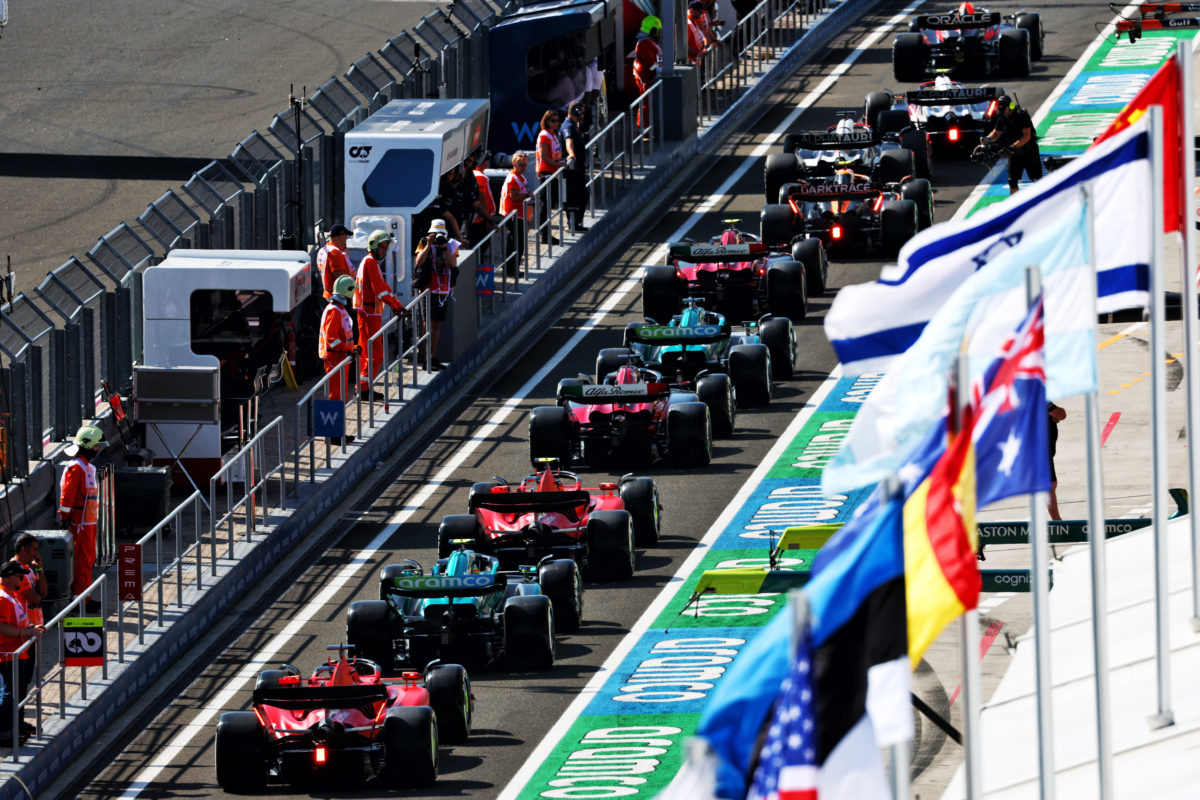

Red Bull team principal Christian Horner has urged the FIA to look at the root cause of F1’s pit lane issues rather than continually applying “sticking plasters”.
Three-time F1 champion Max Verstappen led the chorus of condemnation over the latest regulation change after his sprint and grand prix victories in São Paulo last weekend, describing them as “extremely dangerous”.
Race director Niels Wittich has attempted to address the chaotic qualifying scenes witnessed in the past, such as at Monza for the Italian Grand Prix.
Drivers about to set a lap have toured at incredibly slow speeds on the approach to the Parabolica in a bid to create a gap, only to cause a roadblock for a driver approaching on a fast lap.
It resulted in the introduction of the minimum delta time, ensuring no driver, upon leaving the pitlane and then crossing the start-finish line did not drive ‘unnecessarily slowly’ as determined by the rules, otherwise, they would be penalised.
The knock-on effect has seen drivers opt to create the gap, required to avoid being in the turbulent air of another car, in the pit lane before exiting, only to lead to a queue of cars, and frustration boiling over for those at the rear out of concern they would be unable to set a lap.
At Interlagos, Wittich tweaked the regulations again, stating that no driver could stop “in the fast lane of the pit lane,” instead creating a gap “between the pit exit lights and the SC2 line”.
His notes added: “Any driver who wishes to do so must drive as far to the left as possible to allow other drivers to pass them on the right side of the pit exit road.”
This resulted in some cars stopping as prescribed, whilst others, such as Verstappen, who at one stage was eager to get on with proceedings, overtaking four cars through the windy pit lane at the São Paulo circuit.
Verstappen additionally described the change as “absolutely terrible”, given the nature of the pit exit and the lengthy walls in place.
Verstappen was supported by grand prix runner-up Lando Norris who claimed there are “more and more rules for everything”, which “causes more and more havoc for everyone”.
Horner was wholeheartedly in agreement with the drivers, adding: “We’re just making it too complicated.
“There is a rule for driving out of the garage, driving in the pit lane, driving out of the pit lane.
“You have to go to basics – why are the drivers needing to do these out laps and whatever? Is it tyre pressure? Is it the tyre temperature?
“Go to the root cause of the problem because it is something that didn’t exist in F1 for 50 years. So why is it an issue now?
“For me, it’s looking at the root cause rather than the sticking plasters that keep getting applied.”
The clear hint was steered in tyre supplier Pirelli’s direction, with the Italian manufacturer recently signing a new three-year extension to supply F1, as well as F2 and F3, through to the end of 2027, with an option to continue for a further year.
Pirelli has rarely been praised over the years since it entered F1 in 2011, with the specifications for its tyres constantly changing over time.
Suggested to Horner that F1 was in need of a rest from what it wanted from Pirelli, he indicated it was one area where a team is able to get the upper hand on its rivals.
“You’ve got a lot of very clever engineers that are always looking to find an absolute advantage, and tyres are a little bit of a black art,” said Horner.
“There’s a certain mystique to being able to get the tyre into the right window, and the tyre is so much of the performance of the car. You can see why there’s so much effort that goes into the preparation.”




















Discussion about this post